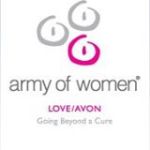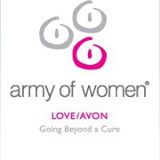 I am a breast cancer survivor. I heard the words “you have breast cancer” over the phone from my gynecologist on December 15, 2004. I had a sentinel node biopsy in January with a lumpectomy and the first node was positive. I will never forget the way my very famous breast surgeon told me that I had to do chemo. He said, “You are going to lose all your hair” in a smiling manner. The news did not go over well with me. I had an axillary dissection to see if there was any other lymph node involvement and luckily there wasn’t.
I am a breast cancer survivor. I heard the words “you have breast cancer” over the phone from my gynecologist on December 15, 2004. I had a sentinel node biopsy in January with a lumpectomy and the first node was positive. I will never forget the way my very famous breast surgeon told me that I had to do chemo. He said, “You are going to lose all your hair” in a smiling manner. The news did not go over well with me. I had an axillary dissection to see if there was any other lymph node involvement and luckily there wasn’t.
I went on the Internet and studied every chemo regimen before I met with my oncologist. I suggested that I wanted CMF since they were chemo drugs that would not make all of my hair fall out, only hair thinning. She recommended that I do “dose-dense” adriamyacin with cytoxin once every 2 weeks for 4 rounds, and then taxol once every two weeks for another four rounds. I asked her “if I believe the CMF will work over the regimen you are suggesting would you give me that for my chemo”? She said “yes, but I really think the dose-dense is the best regimen for your particular case.” I adored her for recognizing that I was in control of my medical decisions. Because she didn’t talk down to me, I felt very comfortable with her.
My pathology turned out to be estrogen positive, progesterone negative, and her2-neu(negative). This meant that I could later take an estrogen blocker and I did not over express the gene meaning the cells did not multiply rapidly and I would not benefit or need a drug like herceptin(tratusunab). Lila’s pathology was estrogen negative, progesterone, negative, and her2neu (negative). This meant that she was triple negative and would not benefit from an estrogen blocker, or a drug like herceptin. Her pathology has a higher degree of recurrence because there is less to fight it with. Her pathology also is prevalent among the African American community, although she was half chinese and half All American.
When I realized I had to do chemo I joined a support group at UCLA Simms/Mann that was awesome. It met every Thursday morning and it was for women going through breast cancer primary treatment. There I met a friend Lila, who also went to the same oncology office that I went to with another doctor. A few days after the first meeting of the group, I saw her at the oncology office and I offered her a ride home. She was further along in her treatment and had already lost her hair. We became instant friends.
I started chemo in February after doing the BRCA 1 and BRCA2 testing and found out that I was negative. The first round went great, but after that it was downhill the rest of the way. The day I lost my hair I called my friend Lila from the group and we talked on the phone all day as the strands of hair kept coming out of my head. It turns out we had a lot in common and I was so grateful to her for staying with me during that frightening day. She knew because she saw how thick and long my hair was and that losing it was not going to go over well.
I started using all the medications to stop the nausea and vomiting. Eventually they all stopped working, even the expensive kytril. I lost 15 pounds and I couldn’t keep very much food down. Lila and I went out to eat a lot and she also had stomach issues, so we really were able to help each other. When I got to my last chemo I kept running to the bathroom with my IV and getting sick.
After chemo I did 7 weeks of radiation going 4-5 times a week on weekdays depending on holidays- equal to 35 treatments. I was still nauseous during radiation. Meanwhile, Lila and I continued getting together a lot to help each other with side effects and talking about breast cancer.
Because Lila was ahead of me in finishing her treatments, she went into the next group at UCLA, which met once a month called Looking Ahead. She told me that the group was only taking one more person and that I needed to hurry to get in to the group. It is an amazing group that meets once a month. After a year and a half of my being in the group, we left UCLA so others could start a group, and we still meet once a month at each others homes. I also took the real estate test, passed and got a great job at the number one office in Beverly Hills.
Six months after my treatment was over I had a suspicious lump that required a biopsy. When the famous doctor walked into the room I was smiling and he said to me “How come you already know the results”? I knew I was fine since I had just finished treatment and it was too soon for a problem.
In February 2007 I had my follow-up MRI. When it was time for the results my doctor was away. I insisted that the doctor on call phone me. I had decided that cancer was not going to kill me but waiting for test results would. He told me there was a suspicious area on my left breast and I needed to come in for a biopsy guided by an ultrasound.
My doctor did an ultrasound and mammogram to see if he could find the suspicious spot on those tests, and he couldn’t. I thought I was in the clear. After all this was only a year and a half after I finished my last treatment. The doctor said, “Just in case, I am going to order an MRI biopsy to be sure”. He ordered the test. I asked the person who performed the test how many he had done and he said about 100. I realized how lucky I was to live in LA where we are on the cutting edge of technology.
After my usual two-hour wait for the doctor I got into the room and waited another half hour for him to come in. When he walked into the room to give me the results, I had the same smile on my face. He did not have a smile. Instead I heard those words again. He said, “It’s malignent. It’s cancer. It’s breast cancer again”. My first question was did I need to do chemo and he said that I didn’t. At least I didn’t hear “You are going to lose all of your hair again”. This was a local recurrence. He told me that I needed a mastectomy since it was in the same breast and that it was my choice if I did a bilateral or just one breast. He gave me three business cards to plastic surgeons that he worked with, plus he made an appointment with one of them who could see me immediately.
The first surgeon was going to do a tram flap (getting tissue from my stomach), and said it would cost $30,000 over my insurance. The second doctor charged me $500 for the consultation & recommended a double lat flap. He further explained that I would not be happy with the results. Then he had his assistant give me an estimate of $80,000 over the costs of the insurance for the procedure. One thing I was sure that he was right about-After spending $80,000 plus the $10,000 over the insurance I had to give the oncology breast surgeon to remove the breast tissue, I would not be happy with the results.
The third surgeon was a woman who accepted my insurance and normal co pays for the procedure. She said that she could use tissue expanders first to stretch the skin and then put implants in. I told her how important it was to me to have the c cup that I always had because I wanted all of my clothes to fit. By that time I had gained much of my weight back. I obviously chose the third surgeon.
I decided to do a bilateral mastectomy since I was having so many suspicious tests requiring biopsies, and my breasts were very dense. I felt that it was too soon for me to have a recurrence after my treatments and if my body was determined to make cancer cells in my breasts, I needed to pay attention to what my body was doing and make the right decision for me.
My friend Lila went with me for my surgery and got the doctor’s report as well as called my family in Tennessee. I also suggested she go back to her surgeon who was the first one I saw the day my surgeon told me about the second cancer and I went for an opinion. Since she was not happy with her results of her lat flap plastic surgery, I felt she should tell the plastic surgeon and give him another chance. He agreed that it was not a great job and said he would not charge her over the insurance to improve her breasts. I went with her for her surgery and after that we both always went with each other when we had surgery.
Without too much detail in this blog entry, the plastic surgery left me with barely a “b” cup and the radiated breast failed miserably. It was not the surgeon’s fault since this really was not her surgical specialty and she did not do flaps. I am so grateful to my oncology breast surgeon for finding my recurrence so early but I wish he told me that I was going to have major problems with my radiated breast. I ended up having 8 surgeries total counting my original surgery and finally found an amazing plastic surgeon that accepts my insurance in LA. If anyone ever needs a referral I will be happy to speak with you about her. She fixed a really botched up job by another surgeon who did a lat flap that also failed on my radiated breast.
My friend Lila also had a recurrence in February 2009. It was a distant recurrence that had metastasized into her skin and bones, I am sorry to tell you she died on January 6th, 2012.
I have learned so much about breast cancer since Lila and I were diagnosed with breast cancer plus I went to many symposiums about breast cancer. I also learned a great deal from the National Breast Cancer Coalition (NBCC at http://www.stopbreastcancer.org), and I am proud to say that I am a LEAD Graduate.
All of this motivated me to start my non- profit dedicated to research, education, patients rights, and ending breast cancer. You will hear more about what I am doing to make this company that I have created a reality, in other blogs.
To learn more about Advocates for Breast Cancer click on “About A4BC.”
 It was so thrilling to attend #ESCAPE2016. How wonderful the BAG IT organization is committed to combining patient advocacy with self discovery. meditation, group exercises, meetings about effective lobbying, running non-profits and even a special Indian dance.
It was so thrilling to attend #ESCAPE2016. How wonderful the BAG IT organization is committed to combining patient advocacy with self discovery. meditation, group exercises, meetings about effective lobbying, running non-profits and even a special Indian dance. 
 The desert was beautiful, but a little warm this time of year. With a no cell phone policy at Miravel Resort, it was nice to not feel so absorbed by the 100’s of tweets, FB posts, texts, and emails, as I tried to balance the great conferences with classes and even group meditations in pods!
The desert was beautiful, but a little warm this time of year. With a no cell phone policy at Miravel Resort, it was nice to not feel so absorbed by the 100’s of tweets, FB posts, texts, and emails, as I tried to balance the great conferences with classes and even group meditations in pods!
 I also realized that I have been dealing with a lot of grief. Thankfully I was surrounded by awesome people.
I also realized that I have been dealing with a lot of grief. Thankfully I was surrounded by awesome people.  During many of the special meditative and group activities, I found myself quite emotional. I do believe that when it comes to cancer there’s so much emotional pain, physical changes, highs and lows, and some very tough times because of the incredible toll this disease can take. Thank you to the sponsors who help bring Escape2016 to patient advocates.
During many of the special meditative and group activities, I found myself quite emotional. I do believe that when it comes to cancer there’s so much emotional pain, physical changes, highs and lows, and some very tough times because of the incredible toll this disease can take. Thank you to the sponsors who help bring Escape2016 to patient advocates.



 Just when I thought all was clear I got a call from my oncologist that after further inspection there is a suspicious spot on my spine at T8. Tomorrow they do an MRI with contrast on my spine and see if a biopsy is warranted.
Just when I thought all was clear I got a call from my oncologist that after further inspection there is a suspicious spot on my spine at T8. Tomorrow they do an MRI with contrast on my spine and see if a biopsy is warranted.



























